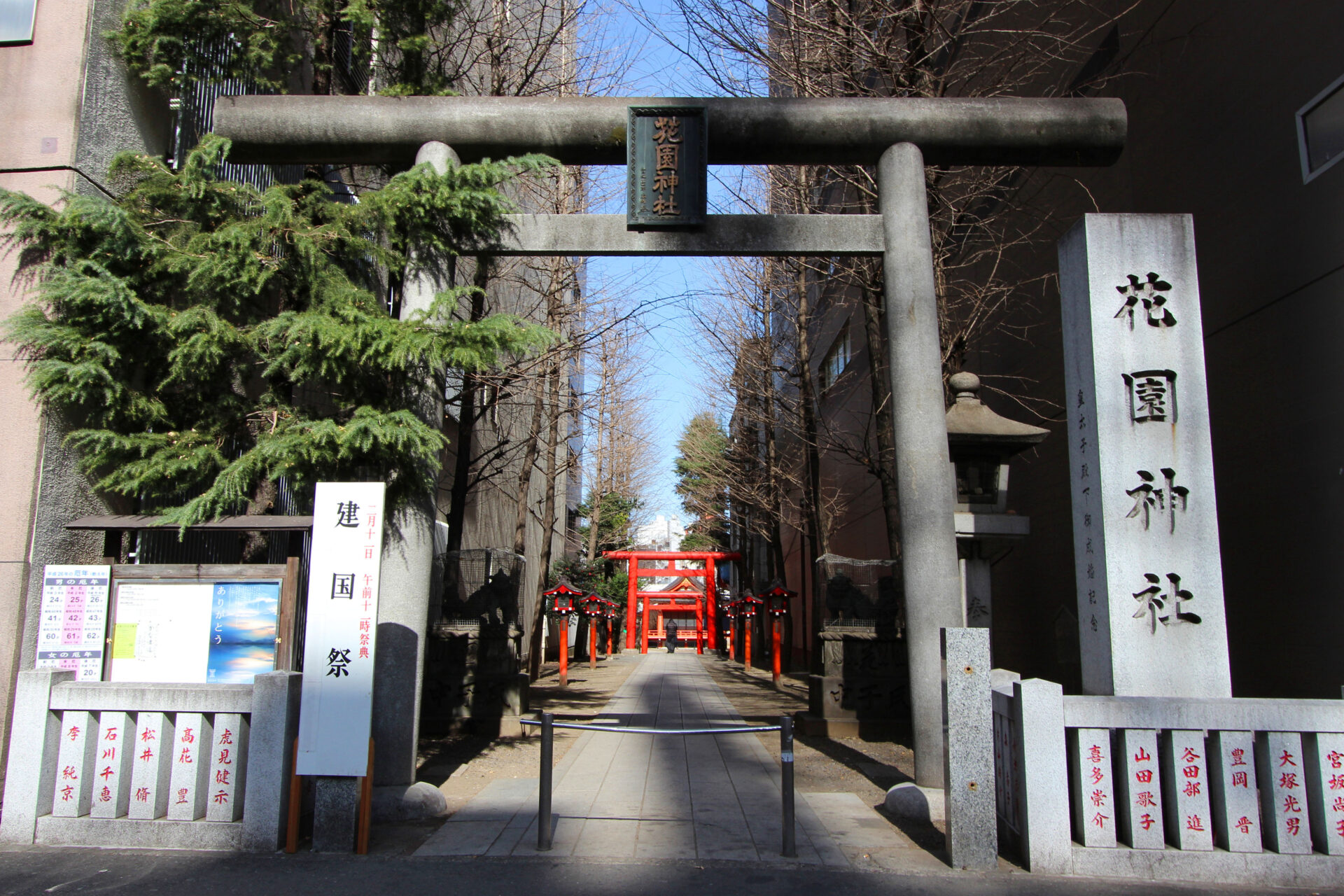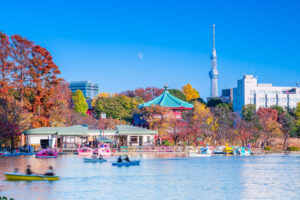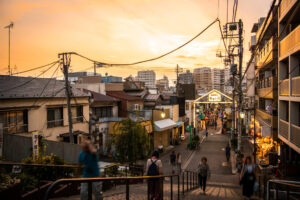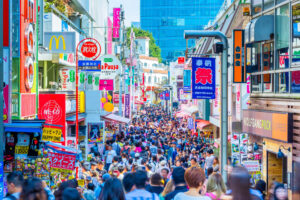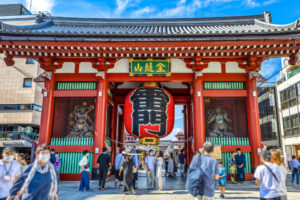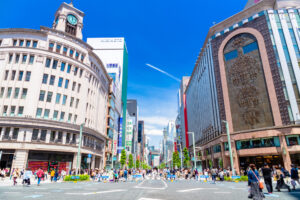Hanazono Shrine, a stunning sanctuary amidst Shinjuku’s dynamic urban landscape, merges modernity and tradition. Shinjuku, known for its high-rise buildings, bustling shopping districts, and lively nightlife, provides a striking contrast to the shrine, which offers an oasis of tranquility and Japanese culture. For both domestic and international tourists, the shrine serves as a respite from Shinjuku’s hectic life, allowing visitors to experience Japan’s traditional beauty.
History of Hanazono Shrine
Tracing back to the early Edo period, Hanazono Shrine flourished alongside the town of Shinjuku, which served as a post town. It garnered the faith of many as the general guardian deity of the area but suffered from two major fires. Following these fires, the shrine rebuilt its structures and introduced performances such as spectacles, theater, and dance within its grounds, marking the beginning of its connection with the entertainment industry.
Highlights of Hanazono Shrine
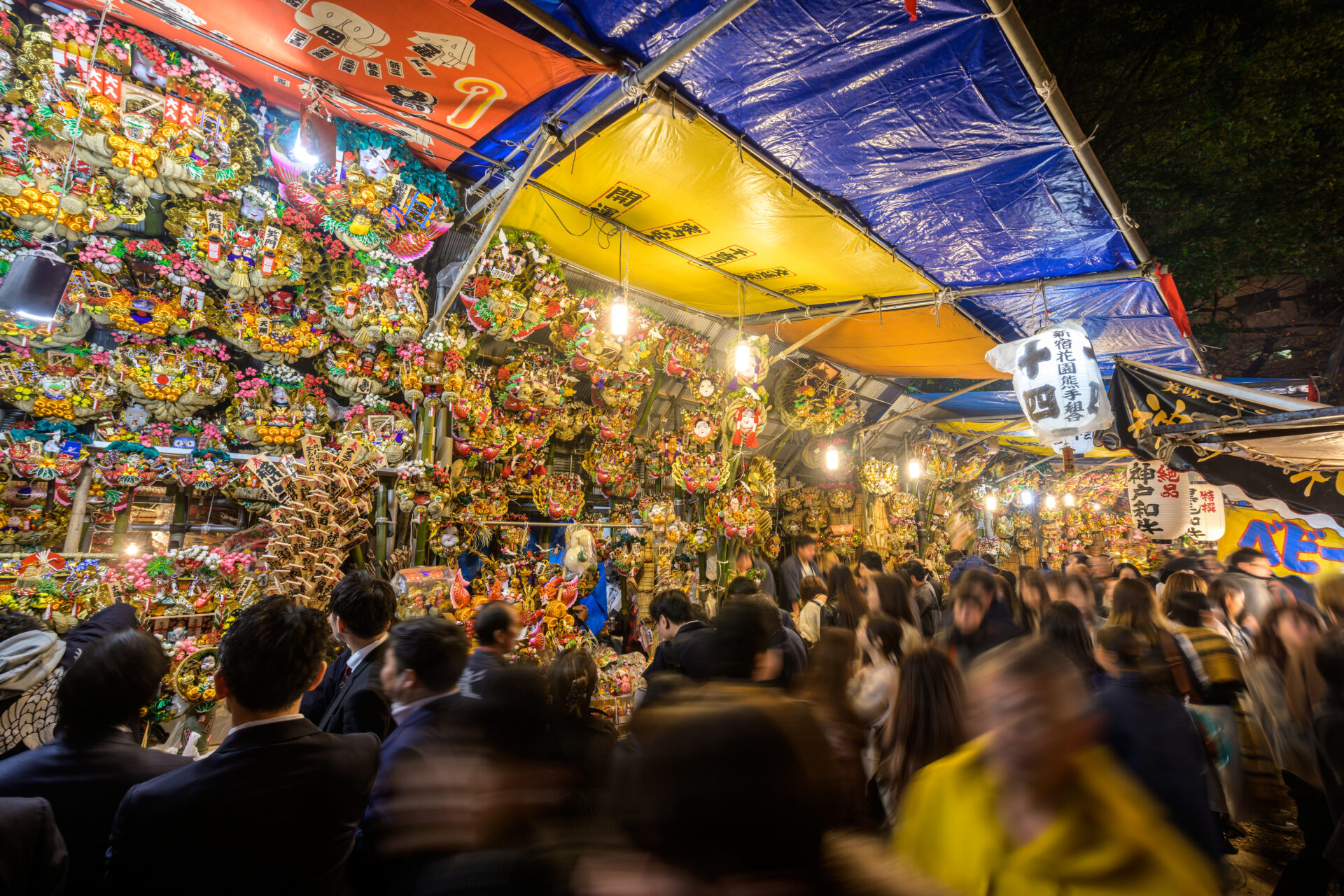
- Itoku Inari Shrine: Located within Hanazono Shrine, Itoku Inari is revered for matchmaking and business prosperity. Many merchants and couples visit to pray for prosperity and happiness. The shrine features a series of enchanting red torii gates, believed to fulfill wishes, making it a popular spot among visitors.
- Geino Asama Shrine: Situated just inside the right entrance of the main torii gate, Geino Asama Shrine dedicates itself to the gods of arts and entertainment, making it a favorite among performers and artists. The shrine is a hub for those seeking artistic inspiration and success in their performances.
- Kanto’s Three Great Tori-no-Ichi (Grand Tori Festival): Starting about 140 years ago, Hanazono Shrine’s Tori-no-Ichi is among the three major such events in Kanto, held every November. The festival attracts approximately 600,000 visitors annually. It is well-known for prayers of business prosperity and protection, highlighted by the sale of colorful lucky rakes. The shrine bustles with vendors and festival-specific foods, offering a vibrant atmosphere.
Unique Omikuji and Charms
Hanazono Shrine offers distinctive fortune slips and amulets. The “fox omikuji,” inspired by Inari, the fox deity, features a design where the fox holds a scroll or a jewel in its mouth. Pulling on it reveals the fortune slip. The “daruma omikuji” features a red and white daruma, with each color indicating a different destiny. The charms are also popular, particularly the “Geido Success Charm,” favored by those in the entertainment industry hoping for success in their performances. The shrine’s charms and omikuji cater to various personal wishes, providing spiritual support and making them ideal souvenirs.
Conclusion
Located in a quiet spot away from Shinjuku’s bustle, Hanazono Shrine offers a unique blend of history and modernity. The shrine’s historical background, architectural beauty, and unique spiritual items promise a rich cultural experience for all visitors. It is highly recommended to visit this shrine, which honors deities of business prosperity and entertainment, providing a spiritually enriching experience.
Access Information:
Address: 160-0022 Tokyo-to, Shinjuku-ku, Shinjuku 5-17-3
Phone: 03-3209-5265 Fax: 03-3209-5645
By Train:
- Tokyo Metro Marunouchi Line, Fukutoshin Line, Toei Shinjuku Line: Shinjuku-sanchome Station, Exit E2, 0 minutes on foot.
- JR Lines, Odakyu Line, Keio Line: Shinjuku Station, East Exit, 7 minutes on foot.
By Car:
- 5 minutes from Shinjuku Exit on the Metropolitan Expressway No. 4 Shinjuku Line.
By Bus:
- Toei Bus: Route 97 to Shinjuku Nishiguchi, 3 minutes on foot from Shinjuku-sanchome.
- Toei Bus: Route 77 to Waseda, 3 minutes on foot from Shinjuku Isetan-mae.

